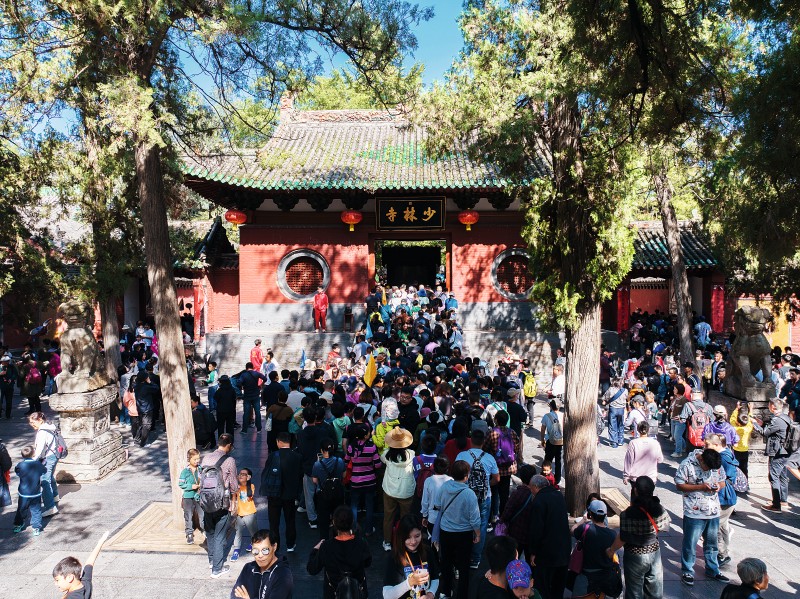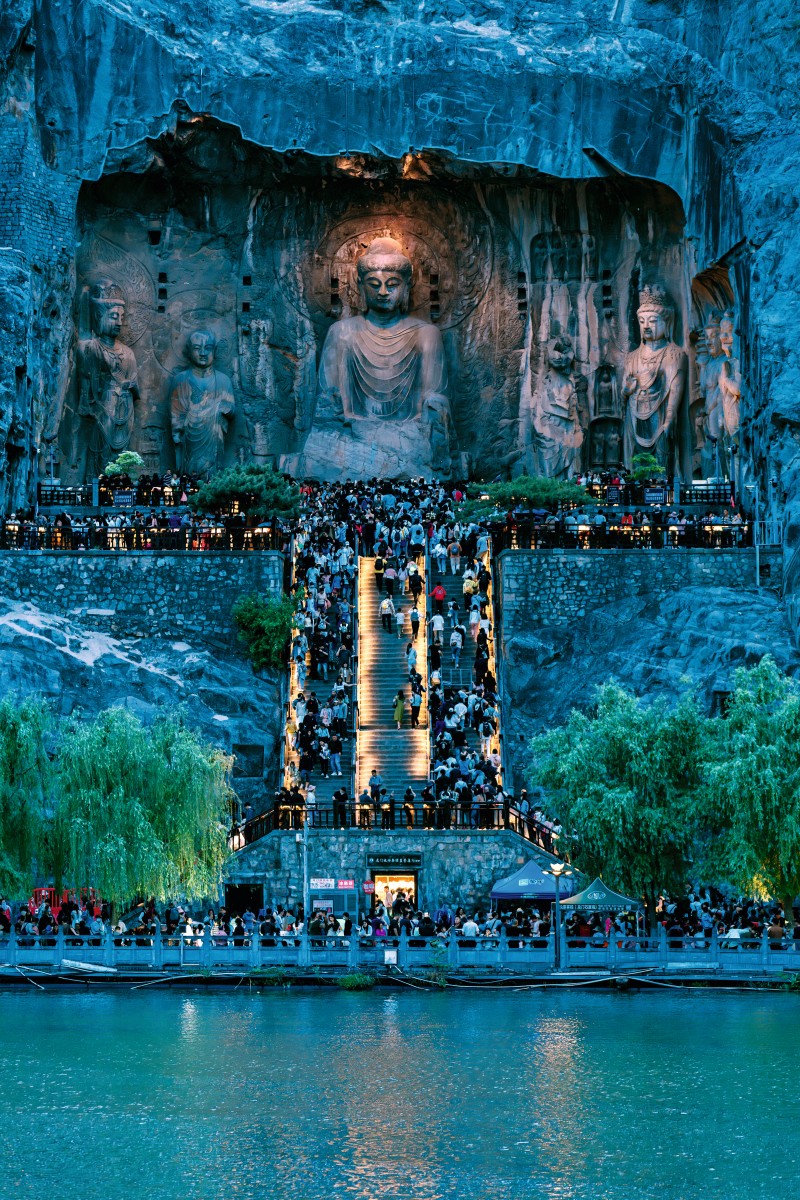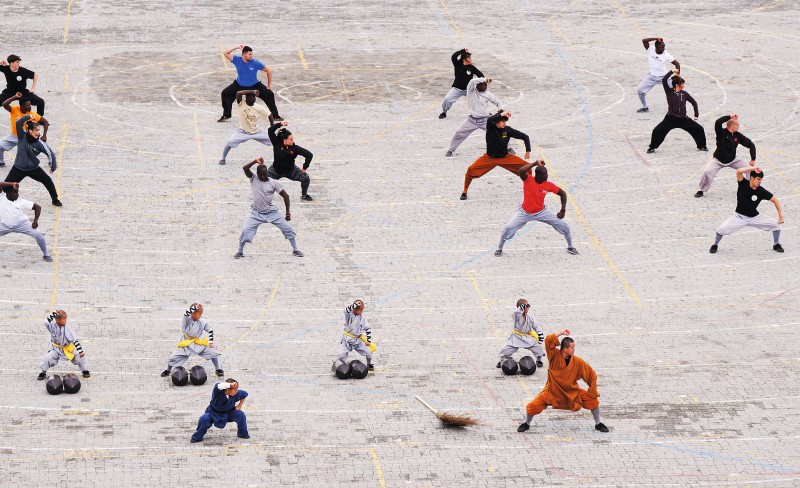Shaolin Temple and Henan: More Than Just Kungfu

The Shaolin Temple is, without a doubt, one of the most emblematic places in China. According to a Chinese proverb, all martial arts that exist under heaven were born there, making it a must-see not only for Chinese kungfu enthusiasts and Buddhist practitioners, but also for every aficionado of Chinese culture and history. This sacred monastery is located at the foot of Wuru Peak of the Songshan mountain range in Dengfeng, central China’s Henan Province, and is the actual home of Shaolin kungfu.
According to legend, Bodhidharma, the 28th patriarch of Mahayana Buddhism in India, arrived at the Shaolin Temple in 527. He spent nine years meditating in a cave in Wuru Peak and founded the Chinese Chan Buddhism at the Shaolin Temple. Thereafter, Bodhidharma was honored as the first patriarch of Chan Buddhism, later known as Zen Buddhism, which exerted a great impact on the world of Buddhism.

The total area of the Shaolin Temple covers more than 30,000 square meters, divided into seven buildings. It is important to understand that the Shaolin Temple contains a mixture of cultural, philosophical, and artistic elements of Taoism, Confucianism and Buddhism, and that it has also been transforming and evolving with the passage of time. On August 1, 2010, during the 34th session of the UNESCO World Heritage Committee, the Shaolin Temple was listed as a World Cultural Heritage site.
Although any date is good, the optimal time to visit the Shaolin Temple is during celebrations for the Zhengzhou International Shaolin Wushu Festival. This event is held in Dengfeng. The latest edition of this festival, which I had the honor to attend, was held in October 2024. The opening ceremony was impressive, and being there made me realize how international Chinese kungfu has become: Over 2,560 athletes from 56 countries and regions signed up to compete during the festival. During the event, I got the opportunity to talk with participants from Brazil, Bolivia, Colombia, Germany, Uruguay, and the United States, as well as several African countries, which evidenced kungfu’s extraordinary global popularity. Many foreign friends travel to the Shaolin Temple to train with the kungfu masters, learn the techniques, experience an unforgettable life, and feel the magic, inspiration, and charm of the legendary place. Many enthusiasts grew up watching movies featuring legendary actors such as Bruce Lee, Jackie Chan, or Jet Li, who fostered a fascination with martial arts.
The martial arts festival is also so youthful! It’s a platform for Chinese children and also attracts numerous young participants from abroad. Kids recognize that Chinese kungfu not only helps them exercise, but also improves character and discipline, aiding coexistence with others. Kungfu represents more than intense competition and combat—it serves as a medium for cultural exchange. For example, last year, boxers from Cambodia joined the festival to showcase their martial arts alongside Shaolin warrior monks, which was a highlight of the event. In this regard, martial arts exchange can promote friendship and build mutual understanding and trust.

Additionally, Henan is a province well worth visiting and exploring, as a cradle of Chinese civilization. The Shaolin Temple is only about an hour and half from Zhengzhou, the provincial capital. Other cities worth a visit include Luoyang, Kaifeng, and Anyang, just to mention the most important, so depending on your available time, one can spend a week or ten days touring this wonderful province full of historical and cultural heritage. It is very convenient to reach Zhengzhou or Luoyang from Beijing. The high-speed train ride only takes about three or four hours. And once in Henan Province, one can move quickly and comfortably between these cities by high-speed train.
In Zhengzhou I highly recommend visiting the Museum of Yellow River Culture. My favorite city in Henan Province is Luoyang, where the impressive Longmen Grottoes featuring giant stone Buddhas are located. After this visit, one can get lost in the streets of the historic center, visit the Yingtianmen Palace to learn about the history of Empress Wu Zetian and several Chinese dynasties of which Luoyang was the capital. Of course, during the visit, I recommend renting traditional Chinese outfits, in order to create unforgettable photos. The Luoyang Museum is impressive, and a visit to the White Horse Temple, the first Buddhist temple in China, is also a must. Please note that if you travel to these places during Chinese holiday periods such as the Spring Festival or the National Day holiday, it will be very crowded, so please be patient.
Gastronomy is a key component of any trip. Among my favorite Henan dishes are hulatang, a spicy, thick soup with a strong black pepper flavor featuring meat, vegetables, and tofu, and huimian, a noodle soup dish with meat and vegetables. Another very interesting and colorful Luoyang specialty is shuixi, which is mainly composed of various dishes. If you like to drink Chinese baijiu (alcohol) and drink with the locals, be careful! Alongside residents of northeastern provinces, Inner Mongolia, and Shandong, Henan locals are considered the most capable drinkers in China!
Álvaro Paños is an editor, translator, and presenter in the Spanish Department of China.org.cn